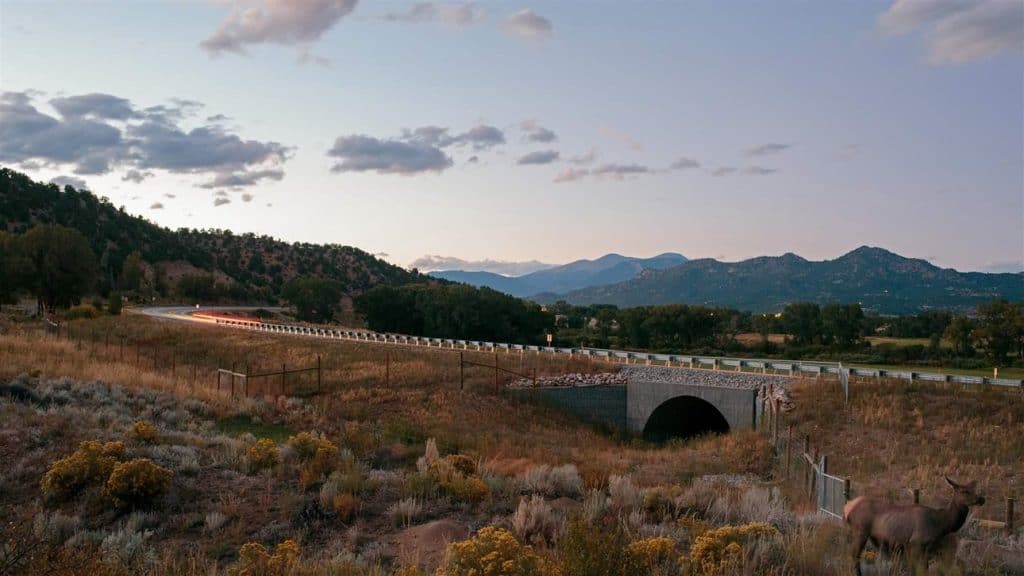
Matt Staver/Getty Images
The Bureau of Land Management Colorado State Office is considering an amendment to oil and gas program decisions in existing BLM Colorado resource management plans to promote the conservation of big game corridors and other important big game habitats on BLM-administered land and minerals in Colorado. The scoping period ended September 2. This press release includes a link to the official website. Here is the project description:
Description: The BLM will propose and analyze, with the best available scientific methods and information, a statewide amendment to existing BLM Colorado land use plans to evaluate alternatives for planning-scale oil and gas management prescriptions for the conservation of important big game habitat. The BLM will consider whether to incorporate new or changed oil and gas management decisions in existing land use plans, such as limits on high-density development, including facility and route density limitations, and other lease stipulations that would incorporate conservation measures for important big game habitat areas in Colorado.
This is in response to the 2018 USDI Secretarial Order No. 3362, “Improving Habitat Quality in Western Big-Game Winter Range and Migration Corridors,” and the release of the state of Colorado’s Big Game Policy Report, which recommended the bureau actually undertake this amendment to strengthen oil and gas lease stipulations consistent with new wildlife rules.
This sounds like good planning, which should be expanded to include:
- The Forest Service. Especially if you are talking about connectivity, it does little good if it runs into a “wall” created by management of other ownerships. How is the Forest Service going to be involved in this? (Especially where BLM administers leases on national forests.)
- Other energy. We have talked about the need to do this kind of thing for renewable energy proposals, and why shouldn’t that be integrated with this kind of planning effort for oil and gas?
- Other species. Just because big game species have more lobbying power doesn’t mean such efforts should ignore the same kinds of connectivity issues for other species like sage-grouse and large carnivores. Including areas used by many species should be a goal.
- Other states. The Order calls for collaboration with states, and it looks like Colorado has taken the initiative here, but that doesn’t mean the BLM couldn’t be promoting this elsewhere, or that it is precluded from initiating an effort that would include state participation.
This process is rather a mess. For one thing, nobody knows what the scope of it will even be. They started out talking about only oil and gas, but I heard that at the scoping meeting they were discussing expanding this effort to cover recreation as well, and who knows what else. So they’re basically re-doing the entire land management plans for all BLM field offices all at once, but focused solely on the single issue of wildlife habitat. Sounds like a recipe for disaster and completely ignoring the BLM’s multiple use mission.
The motorized community is pretty worried that they’re going to establish some sort of arbitrary route density standards anywhere that is considered wildlife habitat, which will force a whole new round of travel management planning to close roads to meet those standards. It seems at this point that something which started out as being just about oil and gas will actually mostly affect recreation. We’ll be keeping a close eye on this one for sure.
Jon, I agree with the idea “why don’t we figure out the best places for oil and gas, wind turbines solar arrays, and strategic minerals on federal land and (the big energy picture) and then focus on where sage grouse, corridors, etc. are. This would give us two things 1) a reality check on how much is possible to develop with those considerations…. and 2) fewer protracted battles about siting (or at least protracted battles about other things). And maybe some other advantages.
I agree with Patrick. Wildlife connectivity can be an excuse for abuse. In the name of connectivity, Custer-Gallatin National Forest instituted a regulation restricting bicycle travel in two areas during the last phase of Forest planning. With no data and no plan to monitor effectiveness, the restriction is effectively perpetual. It should be challenged.
Actually, focusing on where the wildlife habitat is that is important to at-risk species should be the first step in any planning process because that is the one thing that land management agencies are required by law to protect (in addition to special designations like wilderness). It seems like they should have already done that by now, but connectivity may be a new dimension for some since much of the data is pretty recent. But significant new information should aways trigger review and possible reconsideration of management plans. (So should new demand for renewable resource sites.)
Oh what a tangled web we weave. As a multiple-use agency, BLM should be considering “conservation measures for important big game habitat”, not just in response to oil and gas proposals, but – at least occassionally! — on their own merits, and for all other kinds of BLM land uses, not just to help justify oil and gas developments. JAB